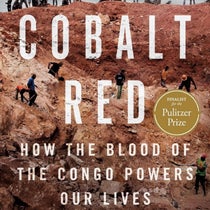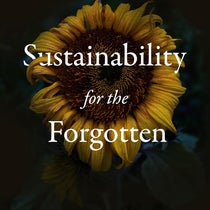Green Reads: Underflows: Queer Trans Ecologies and River Justice
“Tracing conceptual and material underflows is a queer strategy that does the work of showing queer affinities – queer in the sense of resisting/refusing norms of cisheteronormative settler-colonial water politics and land relations.”
- Underflows: Queer Trans Ecologies and River Justice by Cleo Wölfle Hazard
Underflows: Queer Trans Ecologies and River Justice by Cleo Wölfle Hazard employs queer trans, feminist perspectives and experiences to reshape how we might relate to waters and wildlife. Focusing primarily on Salmon Creek, Sugar Creek, and Scott River, situated along the coast of California, we peek beneath the surface into the complexity of the underflow where borders become invisible, floodplains are amphibious, beavers are beacons of resistance, and salmon are precious neighbors.
Hazard’s research interrogates how irrigation systems, levees, man-made dams, and climate change have caused these rivers and creeks to rapidly deteriorate, leading to the near extinction of the local coho salmon. Readers are encouraged to look to nature and consider what it means to be endangered, resilient, and resistant. Whether resisting the removal of trans people from public spaces and restrooms, indigenous peoples from their native lands, or wildlife from their natural habitats, we must push back against what Cleo Wölfle Hazard refers to as “settler logics” that aim to displace, dominate, and exploit.
Underflows acknowledges the physicality of scientific study, the ways abled and disabled bodied persons conduct research, and the private grief over the loss of biodiversity scientists are confined to. Rejecting the detached and emotionless ways of communicating research findings, upheld as the standard by western academia, Hazard recognizes the loves and joys and sorrows of ecological research, relating the queer trans experience to his studies and the “strength to keep swimming against unsurvivable odds.”
In a commitment to centering indigenous knowledge first and foremost, we follow the close collaboration between scientists, activists, and the Kamath, Karuk, Yurok, Muckleshoot, and Duwamish tribes, rejecting the practice of “settlers who often look to Europe for models to deploy in Northern American settings.” Extending further, a more radical collaborative body of researchers emerges, made up of salmon, beaver, alfalfa, willows, fishers, and residents. Together, they embark on the “unsettling work” of undoing the destructive impacts settlers have had on native land that persist to this day.
We see that rivers are forces of nature that push against the dams that try to contain them, flowing and overflowing as sites of community, creativity, vibrancy, and life. Gay clubs and drag bars, rivers and waterfronts, all sacred spaces that must be preserved, protected, and allowed to thrive along with their inhabitants. In this way, queer and trans persons find themselves reflected in the water, beautiful, powerful, and free.
“Consider how trans bodies are like bodies of water. Bodies of water are not containable. They overflow their banks in floods, or they seep away and go dry: the boundary is always a matter of contingency, and human choices on where to draw a line on a map.”
How collaborative efforts worked (and are working still) to preserve Salmon Creek and local wildlife:
- “An awareness of water supply apparatuses as place-based entanglements among people, their wells and springs, and fishes, trees, grasses, raccoons, and other species who also depend on local waters…”
- “A detailed knowledge of one’s own water source, of neighbors’ wells and water use practices, and of local hydro-ecological cycles…”
- “The conviction that self-regulation is preferable to outside regulation…”
- “A desire to reconfigure household or neighborhood water infrastructure to increase summer streamflow and benefit salmon…”
More recommended reading on the subject
- Undrowned: Black Feminist Lessons from Marine Mammals by Alexis Pauline Gumbs; foreword by Adrienne Maree Brown
- The Queerness of Water: Troubled Ecologies in the Eighteenth Century by Jeremy Chow
- The Autobiography of a Transgender Scientist by Ben Barres; foreword by Nancy Hopkins
- Queer Feminist Science Studies: A Reader edited by Cyd Cipolla, Kristina Gupta, David A. Rubin, Angela Willey
- Deviant Hollers: Queering Appalachian Ecologies for a Sustainable Future edited by Zane McNeill and Rebecca Scott; foreword by Stephanie Foote
- A Little Queer Natural History by Josh L. Davis







